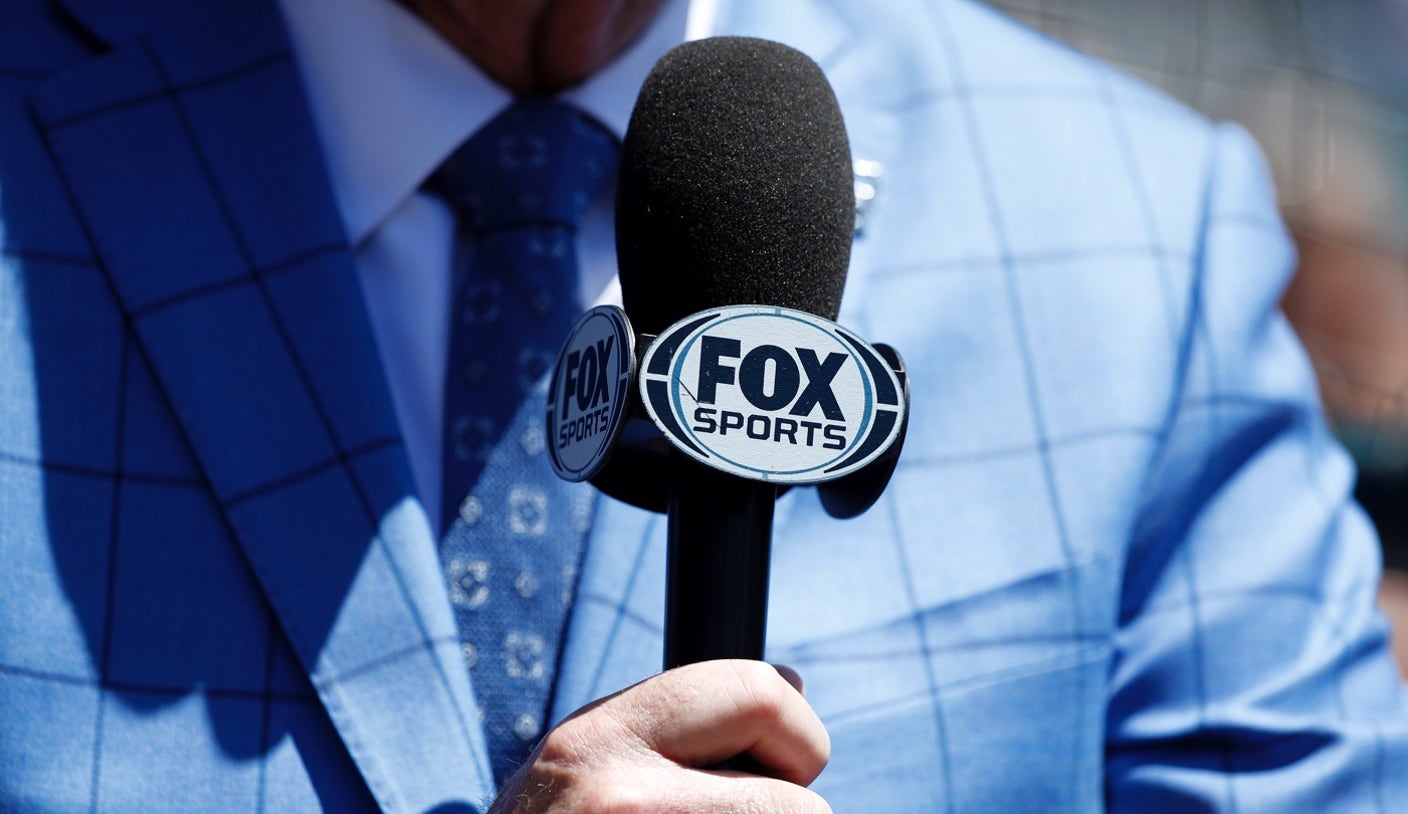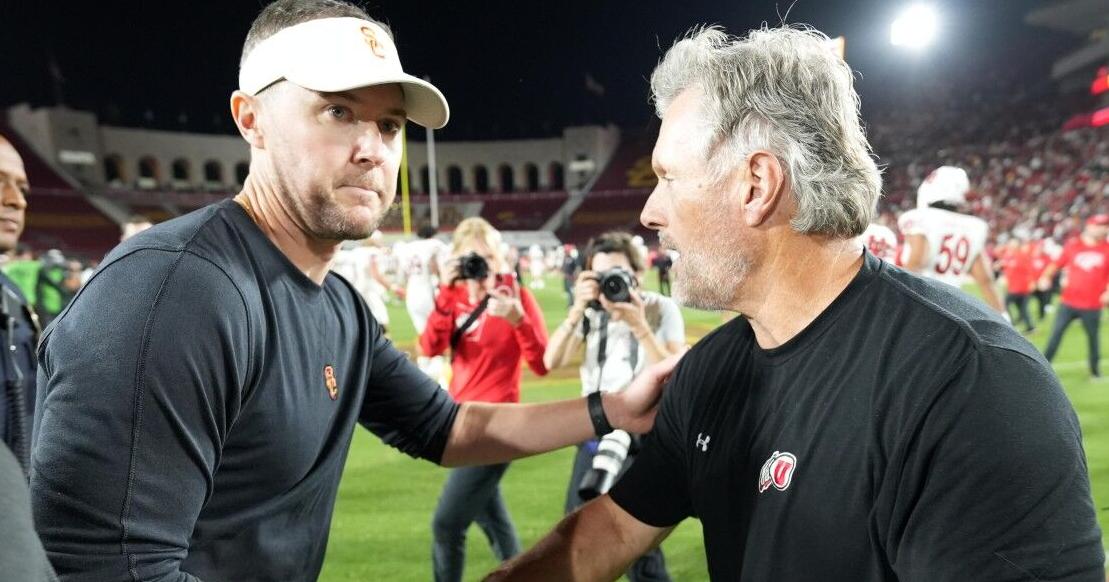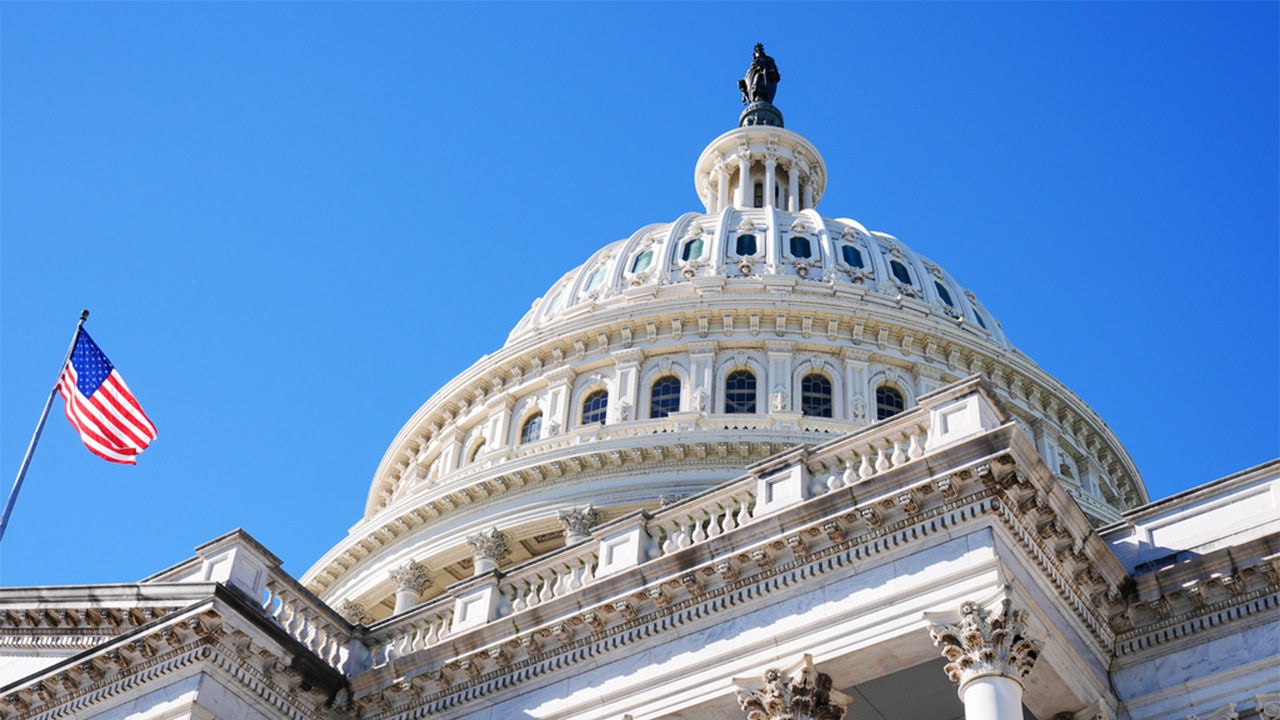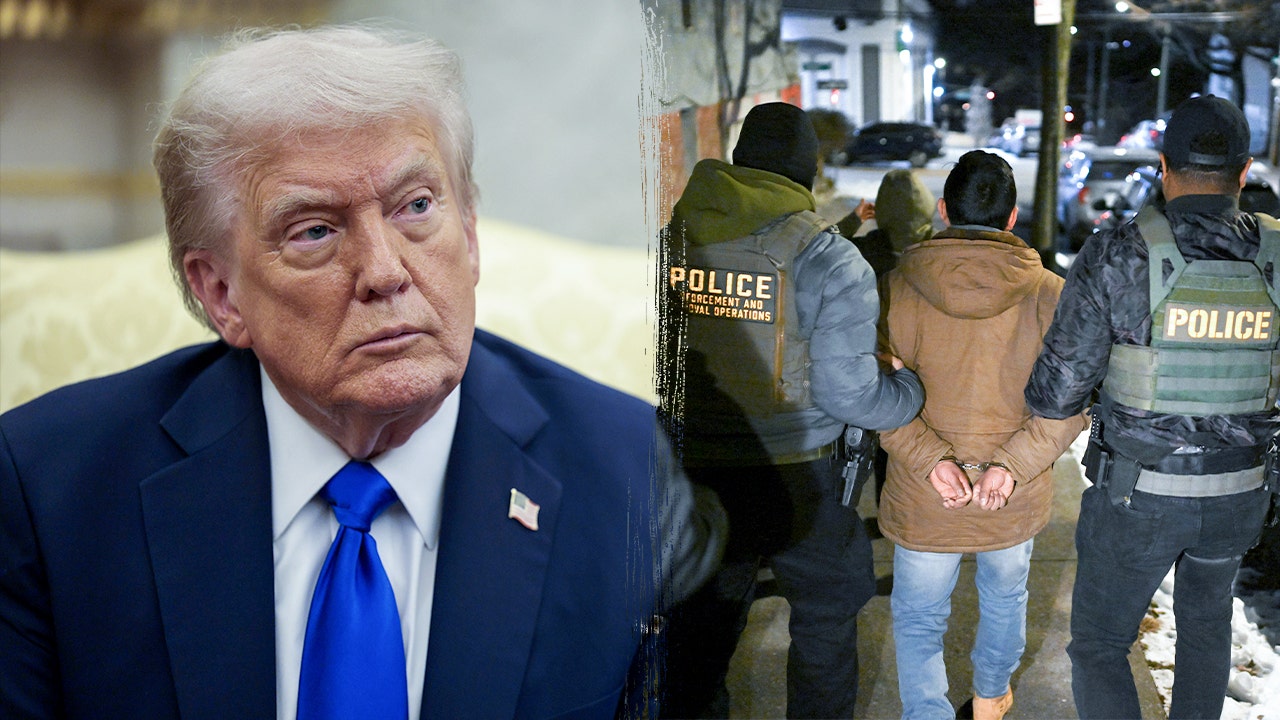Utah
5 storylines to follow as Utah enters fall camp
This article was first published in the Ute Insiders newsletter. Sign up to receive the newsletter in your inbox each Wednesday night.
Fall camp begins next Monday, and it will mark the final step toward kickoff after a lengthy offseason.
For the University of Utah, this season is as heavily anticipated as any, as the Utes, led by quarterback Cam Rising, were picked to win the Big 12 Conference in the preseason media poll.
The expansion of the College Football Playoff — and the automatic bid, and bye, given to the Big 12 champion — has Utah excited heading into 2024.
“Our players were excited about the opportunity. We control our own destiny. If we’re able to win the championship of the Big 12, we are going to the playoffs. We don’t have to hope somebody votes us in,” Utah coach Kyle Whittingham said.
Here are five storylines to watch for as the Utes open up fall camp on Monday ahead of their first season in the Big 12.
The backup quarterback battle
The race for QB2 was the No. 1 storyline throughout spring camp, and it’ll dominate the headlines in the fall.
Sophomore Brandon Rose and true freshman Isaac Wilson will come into fall camp pretty much even after neither separated themselves enough to be given the edge coming out of spring ball.
Utah added Sam Huard after spring practices concluded, adding a third name into the mix. Huard is the only one of the three with college game experience, having played limited snaps in three games at Washington — save for an Apple Cup start where he threw for 190 yards, a touchdown and four interceptions as the Huskies lost 40-13 to the Cougars to cap off a 4-8 season.
With the emergence of Michael Penix Jr., Huard transferred to FCS Cal Poly, where he threw for 2,205 yards on a 60.9% completion rate and tossed 18 touchdowns and 10 interceptions.
Huard is a valuable addition who could end up winning the backup job with his previous experience.
“I can say for certain that Isaac Wilson and Brandon Rose had very good springs, and they’re coming into fall camp essentially neck and neck and now you add Sam to that mix,” Whittingham said. “We’ve got to find out what he can do. So the only thing we know for certain at quarterback is Cam is our guy, but the pecking order beyond that is to be determined.”
Which running back will emerge, or will it be by committee?
Asked which position group he had the most questions about as the Utes prepared for fall camp, Whittingham singled out the running back group.
“Who’s going to emerge as the bell cow running back, if anyone does? Maybe it’ll be by committee, which if that’s the case, that’s not a problem as long as we’re getting the production we need,” Whittingham said.
Running backs coach Quinton Ganther echoed those statements during spring ball, saying that the Utes “don’t have an every-down guy, so to speak, but we have a lot of guys that do a lot of things well.”
Utah has talent in the room, starting with senior Micah Bernard, who is back after missing the majority of last year due to injury.
In 2022, Bernard rushed for 533 yards and four touchdowns while adding 314 receiving yards and a score through the air. He’s Utah’s most versatile back, and its best pass-catching option at the position.
Will he handle the vast majority of the carries, or will it be by committee this season for the Utes?
Jaylon Glover — the No. 2 back behind Ja’Quinden Jackson last season — had a strong finish to the 2023 season, capped by his first 100-plus-yard game in the regular-season finale. If he continues on that trajectory, he’ll be a viable option for the Utes this season.
The wild cards here are Mike Mitchell and Dijon Stanley, who have seen very limited — or in Mitchell’s case, zero — time at running back.
At 6-foot, 211 pounds, Mitchell is the bruising archetype this room is in need of, and the ideal back in situations where Utah needs to pick up a few yards. Is he ready for an increased role, and could he develop into that lead running back for the Utes this year?
Stanley — who has great speed — has shown flashes in spring practices but needs to gain more weight and improve on his pass protection, according to Ganther. Will he make those strides and work his way into the rotation?
Who will be the other starting safety?
Utah replaces two starters — Cole Bishop and Sione Vaki, who were drafted to the NFL this April — at safety, which is the position group that will see the most change from last season.
Nothing is official until the first depth chart is released, but after spring camp, it seems all but certain that Tao Johnson has locked down the starting free safety role.
Johnson was the starting nickel during last season, but played a number of snaps at safety. Whittingham said last season that free safety was Johnson’s natural position, and now that there’s an opening, he’s making the move.
Defensive coordinator Morgan Scalley said that Johnson may be the first true over-the-top free safety the Utes have had since Julian Blackmon.
“Speed. He’s got really good speed over the top. He’s got great ball skills. … Cole and Sione were very good, very good safeties, could play on the back end, but Tao just with his ability to cover ground is really pleasant to see back there,” Scalley said.
The battle between Nate Ritchie, Johnathan Hall and Alaka’i Gilman will continue throughout fall camp to fill the strong safety position, with Ritchie the favorite right now.
After returning from his church mission last season, Ritchie played 154 snaps at safety over 11 games, making three starts with 22 tackles and a sack.
“Nate Ritchie had a terrific spring. He was more of the Nate Ritchie when he started as a freshman. Has shaken all the rust off and he was moving around really well,” Whittingham said.
“(Johnathan) Hall had a terrific spring as well, our safety out of Texas, Alaka’i Gilman, the Stanford transfer, showed up well in spring also. … We got four or five candidates to fill those two spots, and it’s probably headlined right now by Nate Richie.”
Will the offensive line take a step forward?
It’s impossible to divorce Utah’s offensive line play last year from the down year at quarterback the Utes had in Rising’s absence. When you don’t have good quarterback play, it affects the offensive line — especially in the run game.
Last year, Utah rushed for 2,373 yards, and while that ranked No. 33 in the nation, it was the Utes’ worst rushing output in a full season since 2017. Knowing that Utah wasn’t going to gash them through the year, teams stacked the box, which made things difficult for the line. Ja’Quinden Jackson also wasn’t 100% the entire year, further complicating matters.
Those caveats aside, it wasn’t a banner year for the offensive line.
The Utes ranked No. 129 in the FBS in pass blocking and No. 46 in run blocking, according to Pro Football Focus, and while my eye test didn’t peg them as the fifth-worst pass-blocking team in the nation, the Utes know their offensive line performance needs to be better this season.
The presence of Rising — and better quarterback play — under center again is a positive for the offensive line.
“After practice, I went to (OC Andy Ludwig’s) office and just made the comment that it just felt different with Cam (Rising) back there,” offensive line coach Jim Harding said this spring. “And if I feel that way, I’m assuming the players do as well.”
The Utes have to replace three starters — center Kolinu’u Faaiu, who transferred to Texas A&M, left guard Keaton Bills, who is now with the Buffalo Bills, and right tackle Sataoa Laumea, who was drafted by the Seattle Seahawks.
Sophomore Spencer Fano, who started at left tackle as a freshman but is expected to flip to right tackle this year, and starting right guard Michael Mokofisi are back.
Center should be a battle between Jaren Kump and Johnny Maea, both of whom have starting experience at Utah, while Tanoa Togiai (another Ute with some starting experience) is penciled in at left guard and Caleb Lomu is penciled in at left tackle.
“We’re very confident in those guys,” Whittingham said.
Utah’s modified fall camp
Utah’s injury woes last season were well covered, as a laundry list of players missed significant time in the Utes’ 8-4 campaign.
Players that missed significant time included Rising, tight end Brant Kuithe, tight end Thomas Yassmin, running back Chris Curry, wide receiver Mycah Pittman, linebacker Lander Barton, and defensive end Logan Fano. Defensive end Jonah Elliss missed the last two games, and several other players missed at least a couple of games.
This year, the Utes are moving to an NFL-style model for fall camp, taking some days off during the start of “Camp Kyle.”
Though injuries are sadly a constant in football, the goal is to do everything possible to get to the opener on August 29 fully healthy.
“Instead of just hitting the ground running, we’re going to go two days, take a day off, go three days, take a day off, go four days, take a day off. So there’s a ramping effect there,” Whittingham said.
Whittingham is also implementing modifications in lifting to prevent soft-tissue injuries and is looking at the warmup and stretch routines the Utes are doing.
“We’ve looked at every possible angle we have, and we’ll implement some of those this fall,” Whittingham said.
From the archives
Extra points
- How will Utah basketball fare in the Big 12 this season? (Deseret News)
- Will Utah make the College Football Playoff? Bowl projections for the new Big 12 (Deseret News)

Utah
Arizona State begins season at home against Southern Utah

Southern Utah Thunderbirds at Arizona State Sun Devils
Tempe, Arizona; Tuesday, 9 p.m. EST
BETMGM SPORTSBOOK LINE: Sun Devils -16.5; over/under is 150.5
BOTTOM LINE: Arizona State opens the season at home against Southern Utah.
Arizona State went 13-20 overall with a 5-9 record at home during the 2024-25 season. The Sun Devils averaged 74.1 points per game while allowing opponents to score 76.8 last season.
Southern Utah finished 3-11 on the road and 12-19 overall a season ago. The Thunderbirds shot 42.5% from the field and 31.3% from 3-point range last season.
___
The Associated Press created this story using technology provided by Data Skrive and data from Sportradar.
Utah
Jazz G Isaiah Collier Nearing Season Debut After Injury

It looks like Isaiah Collier is nearing his opportunity to make his official season debut for the Utah Jazz.
According to a team announcement, Isaiah Collier has been recalled from the Salt Lake City Stars, the Jazz’s G League affiliate.
We have recalled guard Isaiah Collier from the Salt Lake City Stars.#TakeNote
— Utah Jazz (@utahjazz) November 3, 2025
Collier was with the Stars for a few days as part of his conditioning work of returning to play, following up from his hamstring injury that held him out of the Jazz’s training camp, preseason, and start of the regular season.
However, now that Collier is off the Stars’ roster and back on for the Jazz, the second-year guard should be preparing to make his season debut in the very near future, perhaps during Utah’s current five-game road trip.
Collier was a welcomed bright spot of the Jazz’s roster upon arriving last year as the 29th-overall pick, making his presence felt in a major way pretty quickly within Utah’s backcourt.
In the 71 games he appeared in, Collier averaged 8.7 points, 3.3 rebounds, and 6.3 assists on just under 26 minutes a night, emerging as a nightly starter following the All-Star break, and being one of the best playmakers and facilitators on the roster.
Now for his second season in Utah, he’ll be entering a vastly different Jazz backcourt; one with no more Collin Sexton or Jordan Clarkson in the mix, and instead, currently being led by third-year guard Keyonte George and rookie Walt Clayton Jr.
As the Jazz continue their road of player development and expanding the roles of their young players this season, Collier should wind up having a solid role in Utah’s backcourt as the year goes on. As he returns initially, the year-two guard could find his place as a quality backup point guard within their already-young second unit.
His first chance to return to the Jazz’s lineup will come quickly against the Boston Celtics in TD Garden as part of Utah’s second leg of a back-to-back. But if not that soon, look for the following matchup vs. the Detroit Pistons as a potential date for Collier’s long-awaited addition back into the fold.
Be sure to bookmark Utah Jazz On SI and follow @JazzOnSI on X to stay up-to-date on daily Utah Jazz news, interviews, breakdowns and more!
Utah
Koki Riley: What to do with Miami, and why Utah made a leap in AP Top-25 Poll after Week 10

On Thursday, Awful Announcing — a blog dedicated to covering sports media news nationally — pondered whether I was the best or worst AP poll voter.
I don’t have a clue which side of the spectrum I land on, but I appreciate the fact that there’s at least one person who is listening to the reasoning behind my selections. I always strive to provide fair and honest analysis, even if it’s extreme or unique in comparison to the consensus.
So with that said, let’s break down my poll after Week 10.
My AP Top-25 poll after Week 10
1. Indiana, 2. Texas A&M, 3. Ohio State, 4. Alabama, 5. Georgia, 6. Texas Tech, 7. Notre Dame, 8. Ole Miss, 9. BYU, 10. Oregon, 11. Louisville, 12. Oklahoma, 13. Utah, 14. Miami, 15. Southern Cal, 16. Texas, 17. Missouri, 18. Vanderbilt, 19. Michigan, 20. Washington, 21. Tennessee, 22. Illinois, 23. Virginia, 24. Georgia Tech, 25. Iowa
Just missed: Houston, TCU, Pittsburgh, Cincinnati
What I did with Miami
It felt like dropping Miami to No. 14 in my poll wasn’t enough after the Hurricanes’ loss to SMU. The loss means Miami is just 2-2 in ACC play and the Ponies already had three defeats heading into this week, including two losses to middling at best teams in Baylor and Wake Forest.
But this loss wasn’t as devastating as it may have seemed on the surface. SMU still only has one defeat in conference play, and Miami’s only other loss comes to a Louisville team that I have at No. 11 in my poll.
It seems like Miami’s College Football Playoff hopes are done, but the Hurricanes still have a win over a top-10 team (Notre Dame) and dominated a pretty good South Florida team. The Notre Dame win kept Miami ahead of Texas and USC. Neither team holds a win that impressive, and they have flaws in their own right.
Texas earned a huge win over Vanderbilt this week and beat Oklahoma, but also lost to Florida and probably should’ve fallen to lowly Kentucky and Mississippi State. USC snuck past Nebraska on the road this week and beat Michigan, but the Trojans — unlike Miami — lost to the Irish.
Sliding up to No. 6 in Miami’s place was Texas Tech after the Red Raiders dominated another Big 12 team (Kansas State) on Saturday. Besides one loss with the backup quarterback on the road, Tech has been unstoppable.
I prefer the Red Raiders over Notre Dame, given that the Irish needed a late touchdown to pull away from a woeful Boston College team this weekend and have a weaker strength of record, according to ESPN.
Utah’s rise
Utah’s lack of stellar play at quarterback still makes me nervous, but its resume has become impossible to ignore at this point.
When they haven’t lost, the Utes have blown everyone out, including this weekend when they crushed Cincinnati 45-14 at home. It was the sort of statement victory they needed, given that their best win before this week was over Sam Leavitt-less ASU at home.
The lopsided wins, combined with the fact that its only defeats came to top-10 teams in my poll, were why the Utes made a meteoric rise in my rankings this week.
Other notes
Virginia is at No. 12 in the overall poll, but is only 24th in my poll for a couple of different reasons. The Cavaliers have a great overtime win over Louisville, but close wins over North Carolina, Florida State and Washington State, and a loss to NC State make me question what their actual quality is.
Oddly enough, the team below them in my poll also lost to NC State this week. I’ve consistently been lower on Georgia Tech because of the lack of competition it’s faced to this point, despite being undefeated.
The Yellow Jackets still made my poll because beating Duke on the road isn’t easy, and an 8-1 record for a Power Four conference team is still pretty good. They’ll be tested to end the year as they face Pittsburgh and Georgia to finish the season.
Iowa was the last team out a week ago, but the Hawkeyes are in this week despite not playing because Houston and Cincinnati lost. Iowa lacks a strong win, and the Iowa State loss doesn’t look great, but the Hawkeyes have managed to be the only team that’s lost to Indiana by single digits.
-

 Milwaukee, WI7 days ago
Milwaukee, WI7 days agoLongtime anchor Shannon Sims is leaving Milwaukee’s WTMJ-TV (Channel 4)
-

 News1 week ago
News1 week agoWith food stamps set to dry up Nov. 1, SNAP recipients say they fear what’s next
-

 Alabama1 week ago
Alabama1 week agoHow did former Alabama basketball star Mark Sears do in NBA debut with Milwaukee Bucks?
-

 News1 week ago
News1 week ago1 dead, 6 injured in shooting at Lincoln University homecoming festivities
-

 Austin, TX1 week ago
Austin, TX1 week agoDia De Los Muertos Austin: Parades, Altars & Events
-

 Culture1 week ago
Culture1 week agoVideo: Tyler Mitchell Breaks Down Three Photos From His New Book
-

 Culture6 days ago
Culture6 days agoVideo: Dissecting Three Stephen King Adaptations
-

 Seattle, WA7 days ago
Seattle, WA7 days agoFOX 13’s Aaron Levine wins back-to-back Jeopardy! episodes













